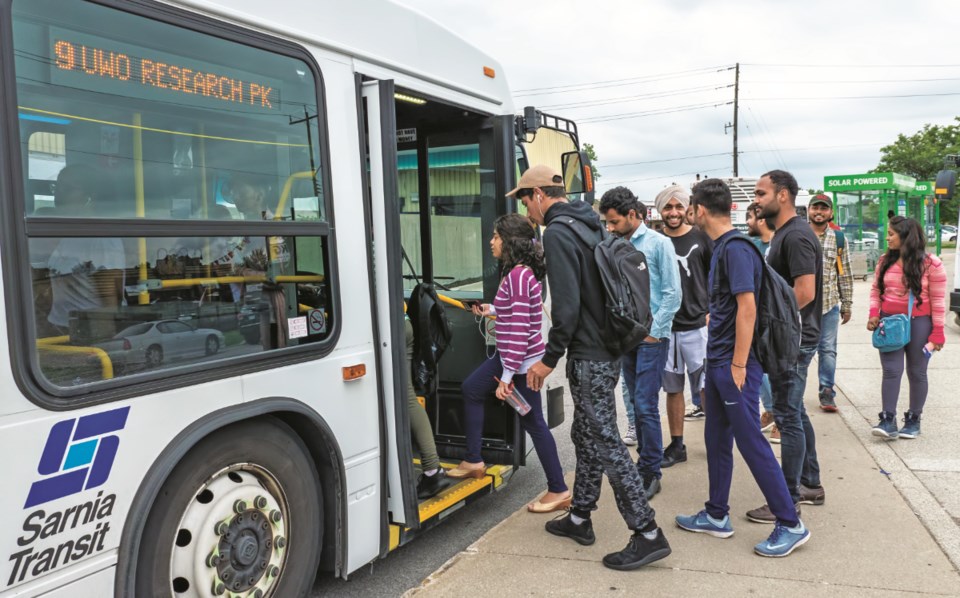The City of Sarnia is inviting residents to provide feedback through its newly launched Sarnia Transit Rider Survey, which seeks to gather insights into how the local public transit system can be improved based on the needs and experiences of its users.
In The Transit Ridership Recipe, transit consultant Jarrett Walker discusses key strategies for maximizing ridership. He highlights the challenge transit agencies face in balancing ridership with widespread coverage, known as the Ridership Coverage Tradeoff. A key factor discussed is frequency—the time between buses—which Walker argues is vital for effective public transit.
The report Move! That! Bus! - Tactics for Transforming Transit in Two Years by the National Association of City Transportation Officials (NACTO) emphasizes that increasing bus frequency to every 15 minutes or less makes transit more accessible and encourages higher ridership, stating that "more frequent bus service means more freedom."
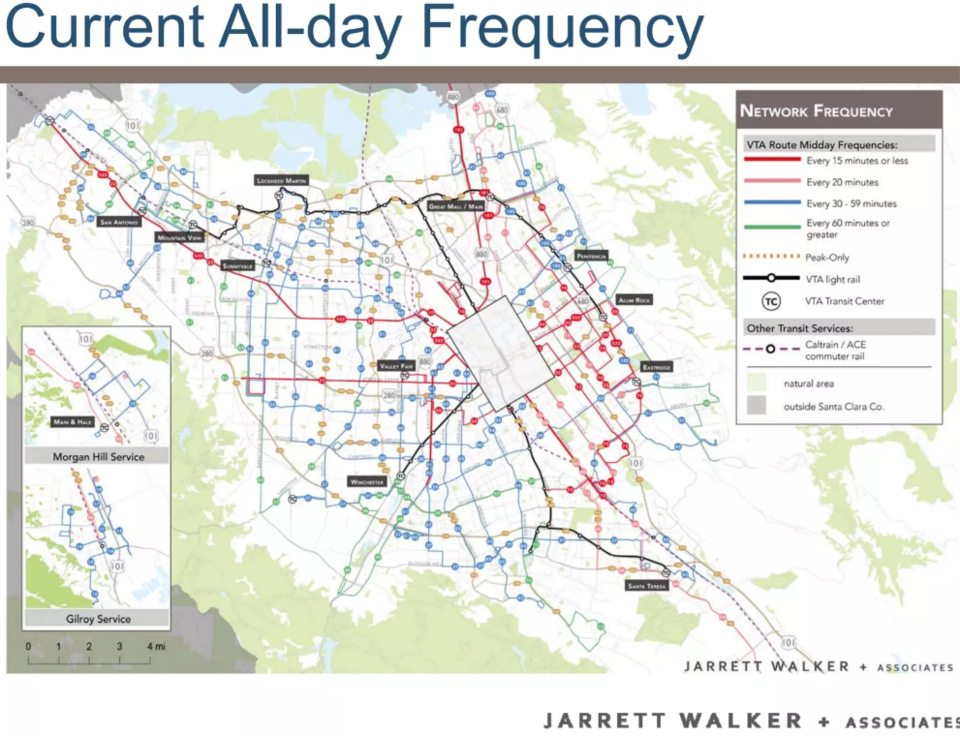
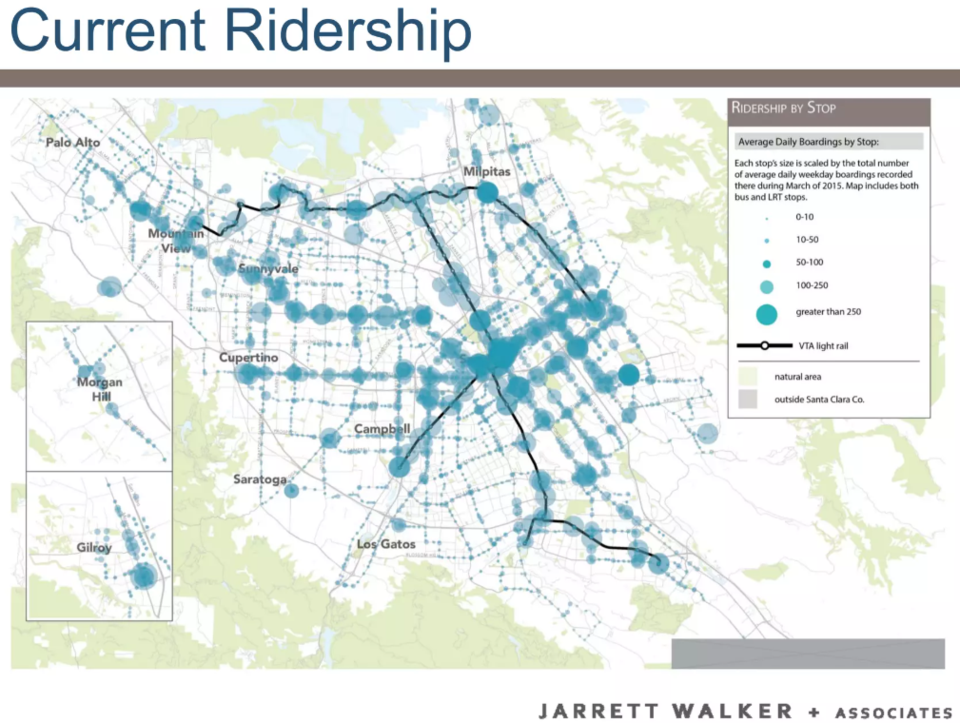
The challenges of low-frequency transit lie in its limited availability, which can restrict timely access for riders. Walker highlights this issue by comparing infrequent service to a gate that only opens at fixed intervals, making it difficult for users to align their schedules with transit availability. For example, if a bus schedule does not align with a rider’s needs, long waits between buses can lead to significant delays and inconvenience.
Walker identifies three key benefits of frequency:
Reduced Waiting Times: High-frequency service over long hours allows you to go when you want to go.
Simplified Connections: A single line with poor connections limits travel to one direction, but a network of frequent lines allows you to travel across a service area, getting you to more places. This network effect increases the ridership potential of each line and the entire system.
Increased Reliability: If a bus breaks down or runs late, high frequency ensures that another one will arrive shortly.
Walker points to his firm's own data on American Cities, showing that increased frequency is linked to higher productivity, even when factoring in the additional costs.
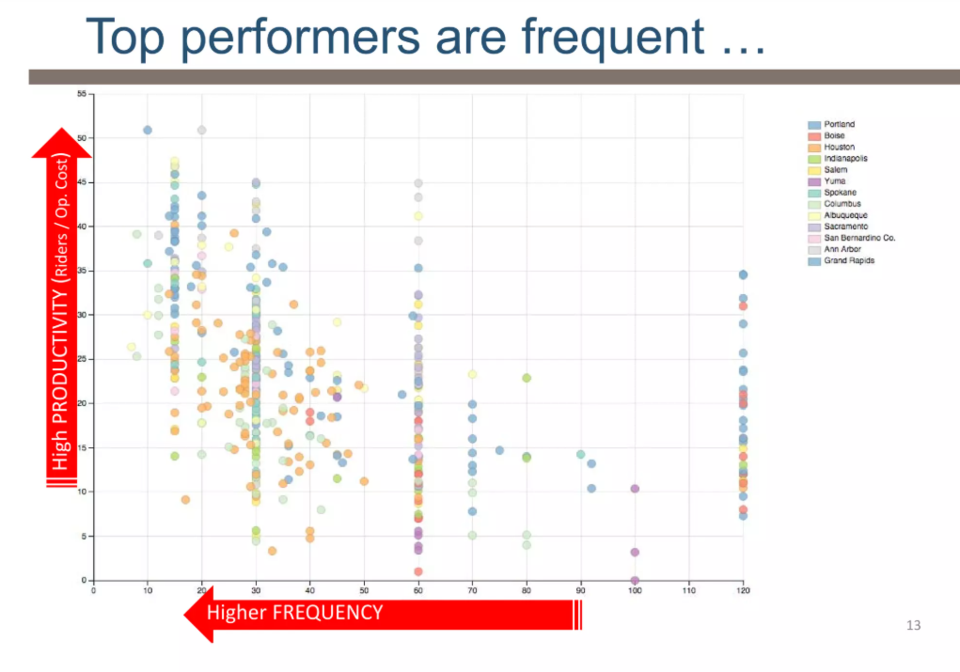
Current wait times in Sarnia’s transit system—40 minutes for major routes and up to 80 minutes for less busy ones—pose challenges for riders. Sarnia operates on a hub model that offers broad coverage but funnels connections through three main terminals (Downtown, Clearwater, and Northgate), which can limit opportunities for direct travel and seamless connections, posing challenges for network efficiency.
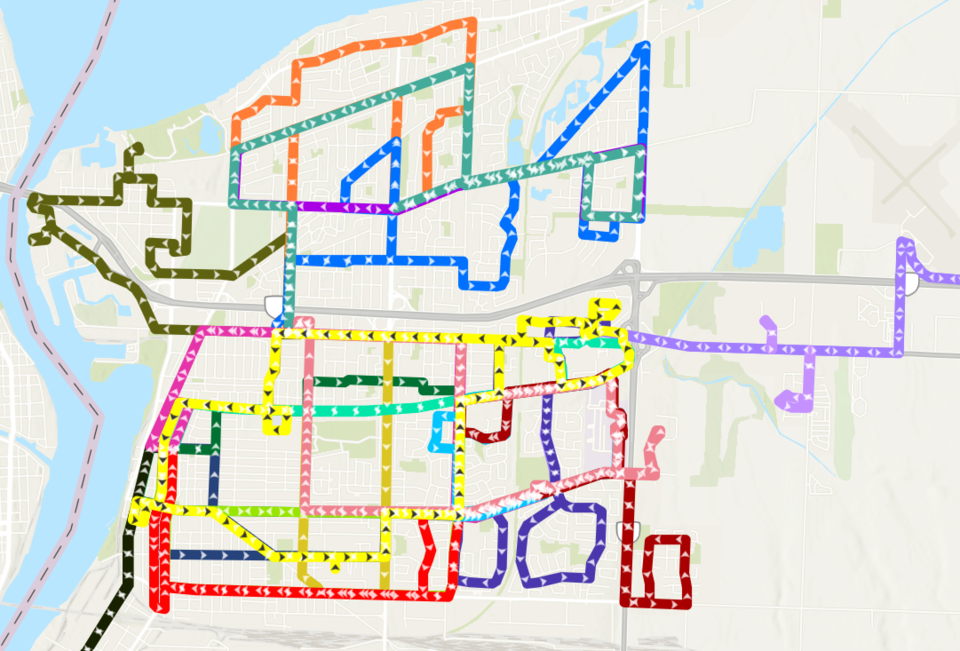
The Move! That! Bus! report by the National Association of City Transportation Officials (NACTO) and insights from Walker suggest that improving transit frequency and reliability by offering all-day bus service can enhance accessibility and ridership. They suggest two ways for cities and transit agencies to achieve this.
Shift existing schedules and resources to increase frequency throughout the day and extend service span. Transit agencies may improve service by reallocating existing resources (buses and operators) to increase frequency throughout the day and expand late-night and weekend options. Evening service is crucial for return trips and consistent ridership, while weekend service is vital for workers in retail and entertainment. Sarnia’s current system, which ends around 6 p.m., lacks return options for these potential commuters.
Redesign bus networks to expand access to neighborhood jobs and destinations. Transit agencies may better serve riders by eliminating redundant routes and designing high-frequency networks to improve access and connections to local jobs and destinations. Bus network redesigns, which often don't increase operating costs, can reallocate existing service hours to more effective routes. For Sarnia, this could involve shorter, more frequent, and direct routes linking the city's denser, walkable areas to key destinations.
These suggestions align with Kingston's approach to transit, another mid-sized city that achieved 6 million riders in 2017 and continues to grow, now offering extended hours of 15-minute service on major routes and 30-minute service on most other routes.
Implementing these principles could address some of the challenges faced by Sarnia’s transit system, such as long wait times and limited connectivity. By focusing on frequency, reliability, and network efficiency, the city could create a more accessible and practical transit experience for its residents.
How to Share Your Thoughts:
Residents can provide feedback through the Sarnia Transit Rider Survey, which is open until December 20 at 4 p.m. Feedback gathered will help inform potential improvements to the city’s transit system.
